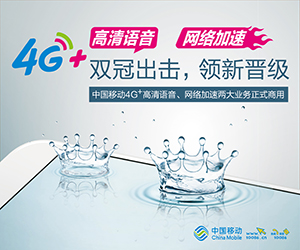First results from a Phase 3 trial conducted across 25 centers in Japan were presented at the Annual Meeting of the Japanese Urological Association, highlighting Ferring’s ongoing commitment to establish the new standard of care in BCG-unresponsive NMIBC1
Results showed 75% complete response rate at three months in high-risk BCG-unresponsive NMIBC patients (n=20) receiving nadofaragene firadenovec (marketed as ADSTILADRIN in the US) and is in addition to the independent real-world data presented earlier this year that showed a 79% complete response rate2
Safety profile shows all treatment-related adverse events were Grade 1 (84.2%) or Grade 2 (15.8%), with no Grade 3, 4, or 5 adverse events reported1
SAINT PREX, Switzerland--(BUSINESS WIRE)--Ferring Pharmaceuticals presented the first results from an ongoing Phase 3 trial in Japan assessing the efficacy and safety of nadofaragene firadenovec in patients with high-risk Bacillus Calmette-Guérin (BCG)-unresponsive non-muscle invasive bladder cancer (NMIBC) with carcinoma in situ (CIS) with or without papillary tumors (±Ta/T1).1 Nadofaragene firadenovec is the first and only intravesical non-replicating gene therapy approved by the U.S. Food and Drug Administration (FDA) in this patient population.2 The product is given once every three months.
The data – presented at the 112th Annual Meeting of the Japanese Urological Association (JUA 2025) held April 17-19 in Fukuoka, Japan – showed a complete response (CR) rate at three months of 75% (15/20) among Japanese patients with CIS ± high-grade Ta/T1.1 Importantly, these results were achieved following a single quarterly administration, representing a significant clinical advantage. The efficacy appears higher than previously reported in the US Phase 3 trial3,4 and adds to a growing body of evidence. Recent real-world data was presented by the Mayo Clinic and showed 79% CR rate,2 demonstrating consistent efficacy and safety when patients are treated with nadofaragene firadenovec. Patients who responded at the three-month assessment received continued every three months doses until disease recurrence. These data will be presented at a future congress. Within this conservatively designed protocol, a replication of CS-003 US Phase 3 trial, patients who did not respond at three months were not offered a re-induction dose. This contrasts with a growing trend in other NMIBC trials, where re-induction is included in the study protocols for patients who do not achieve a response at initial assessment. Re-induction is now being explored with nadofaragene firadenovec in other trials.
“When BCG therapy is ineffective, patients are forced to choose invasive surgery, i.e., total bladder removal, but nadofaragene firadenovec may provide a new treatment option,” noted Professor Keiji Inoue, M.D., Ph.D., Department of Urology, Kochi Medical School. “These findings are particularly significant for Japanese patients, as our treatment options have been more limited compared to other regions. The ability to achieve such promising results represents an important advancement for our clinical practice.”
Overall, 80% of participants (16 patients) experienced drug-related adverse events (AEs), with 76 total AEs recorded. All reported AEs were either Grade 1 (64 AEs in 15 participants, 84.2%) or Grade 2 (12 AEs in 5 participants, 15.8%). No Grade 3, 4, or 5 AEs were reported, demonstrating a clinically manageable and tolerable safety profile. The data from Japan add to the growing body of evidence, including recent real-world data presented by the Mayo Clinic,2 demonstrating favorable efficacy and safety when patients are treated with nadofaragene firadenovec.
“At Ferring, we are committed to meeting the unmet needs in bladder cancer care and equipping uro-oncologists with critical evidence they need to deliver effective, and life-changing treatment,” said Joern Jakobsen, M.D., Ph.D., Vice President and Head of Global Research and Medical for Uro-Oncology and Urology, Ferring Pharmaceuticals. “These new Phase 3 findings affirm the safety profile of nadofaragene firadenovec, demonstrating a three-month efficacy that is higher than previously reported in our Phase 3 clinical trial, and complements results from an ongoing independent real-world study presented earlier this year. Collectively, the data are broadening our understanding of the value that nadofaragene firadenovec offers, furthering our journey to establish nadofaragene firadenovec as the new standard of care and backbone therapy across the urothelial cancer disease spectrum.”
Bladder cancer is the 9th most common cancer worldwide by incidence, with approximately 614,000 new cases diagnosed each year.5 Non-muscle invasive bladder cancer (NMIBC) accounts for about 75% of all newly diagnosed bladder cancers.6 For patients who do not respond to BCG treatment, current options are limited, often leading to invasive surgery involving complete bladder removal. The strong efficacy demonstrated in this Japanese patient population suggests nadofaragene firadenovec could address a critical unmet need in the bladder cancer treatment landscape, delaying radical cystectomy and preserving quality of life for thousands of patients annually.
The ongoing Phase 3 Japanese trial is evaluating the efficacy and safety of nadofaragene firadenovec in two cohorts of high-risk BCG-unresponsive NMIBC patients: those with CIS ± HG Ta/T1, and patients with papillary tumors (Ta/T1) only. Results from the cohort with CIS ± HG Ta/T1 were presented on April 19 at JUA 2025.1
About nadofaragene firadenovec
Nadofaragene firadenovec (marketed as ADSTILADRIN® in the US) is the first and only FDA-approved intravesical non-replicating gene therapy for the treatment of adult patients with high-risk Bacillus Calmette-Guérin (BCG)-unresponsive non-muscle invasive bladder cancer (NMIBC) with carcinoma in situ (CIS) with or without papillary tumors. It is a non-replicating adenovirus vector-based therapy containing the gene interferon alfa-2b, administered locally as a monotherapy by catheter directly into the bladder once every three months. The vector enters the cells of the bladder wall, releasing the active gene and causing the bladder's cell walls to secrete high and transient local expression of interferon alfa-2b protein, a naturally occurring protein the body uses to fight cancer. This approach essentially turns the bladder wall cells into interferon microfactories, enhancing the body's own natural defenses against cancer.
Nadofaragene firadenovec has been studied in a clinical trial programme that includes 157 patients with high-risk, BCG-unresponsive NMIBC who had been treated with adequate BCG previously and did not see benefit from additional BCG treatment (full inclusion criteria published on clinicaltrials.gov: NCT0277384).3
Final 60-month follow-up data demonstrated an 80% overall survival rate and 49% cystectomy-free survival rate in adult patients with high-risk BCG-unresponsive NMIBC with CIS with or without papillary tumors (±Ta/T1), and in patients with high-grade Ta/T1 without CIS5. Most treatment emergent AEs (AEs) at five years were transient Grade 1 or 2 (66% of all patients studied), and <4% of patients experienced Grade 3 AEs with the most common being discharge around the catheter during instillation, fatigue, bladder spasm, urgency to urinate, chills, dysuria, pyrexia, and urinary incontinence. There were no Grade 4 or 5 AEs, no treatment-related deaths, and no new safety signals reported with long-term follow-up.
Ferring is leading the future in uro-oncology treatment with nadofaragene firadenovec at the centre, while expanding access with the support of new, state-of-the-art manufacturing facilities.
About Non-Muscle Invasive Bladder Cancer (NMIBC)
NMIBC is a form of bladder cancer which is present in the superficial layer of the bladder and has not invaded deeper into the bladder or spread to other parts of the body. Bladder cancer is the ninth most commonly diagnosed cancer globally. 75% of bladder cancers present as NMIBC.7 In patients with high-risk NMIBC, intravesical BCG remains the first-line standard of care. However, more than 50% of patients who receive initial treatment with BCG will experience disease recurrence and progression within one year, with many developing BCG-unresponsive disease.7 Current treatment options for BCG-unresponsive patients are very limited, and National Comprehensive Cancer Network (NCCN) guidelines recommend cystectomy (partial or complete removal of the bladder).
About Ferring Pharmaceuticals
Ferring Pharmaceuticals a privately owned, research-driven, specialty biopharmaceutical group committed to building families and helping people live better lives. We are leaders in reproductive medicine with a strong heritage in gastroenterology and urology, and are at the forefront of innovation in uro-oncology gene therapy. Ferring was founded in 1950 and employs more than 7,000 people worldwide. The company is headquartered in Saint-Prex, Switzerland, and has operating subsidiaries in more than 50 countries which market its medicines in over 100 countries.
Learn more at www.ferring.com, or connect with us on LinkedIn, Instagram, YouTube, Facebook and X.
1 Inoue K, Kikuchi E, Nishiyama H, Nasu Y, et al. Efficacy and Safety of nadofaragene firadenovec for BCG-Unresponsive Non–Muscle-Invasive Bladder Cancer: Initial Results From an Ongoing Japanese Phase 3 Trial. Presented at the 112th Annual Meeting of the Japanese Urological Association, April 19, 2025. Available at: https://www.micenavi.jp/jua2025/search/detail_program/id:2055
2 Moyer J, Durant A, Nguyen M. Real-world outcomes of nadofaragene firadenovec in BCG-unresponsive non-muscle invasive bladder cancer. Presented at the Annual Meeting of the American Society of Clinical Oncology GU, February 2025.
3 ADSTILADRIN | FDA
4 Boorjian SA, et al. Intravesical nadofaragene firadenovec gene therapy for BCG-unresponsive non-muscle-invasive bladder cancer: a single-arm, open-label, repeat-dose clinical trial. Lancet Oncol. 2021;22(1): 107-117.
5 Narayan VM, at al. Efficacy of Intravesical nadofaragene firadenovec for Patients with BCG-Unresponsive Non-muscle Invasive Bladder Cancer: 5 Year Follow-Up from a Phase 3 Trial. J Urol. 2024 May 5. doi: 10.1097/JU.0000000000004020
6 World Cancer Research Fund International. Bladder cancer statistics. Available at: https://www.wcrf.org/cancer-trends/bladder-cancer-statistics/. Last accessed: March 2025.
7 Deng S, et al. Global research trends in non-muscle invasive bladder cancer: Bibliometric and visualized analysis. Front Oncol. 2022; 12:1044830.
8 Babjuk M, et al. European Association of Urology Guidelines on Non-muscle-invasive Bladder Cancer (Ta, T1, and Carcinoma in Situ). Eur Urol. 2022;81(1):75-94.







